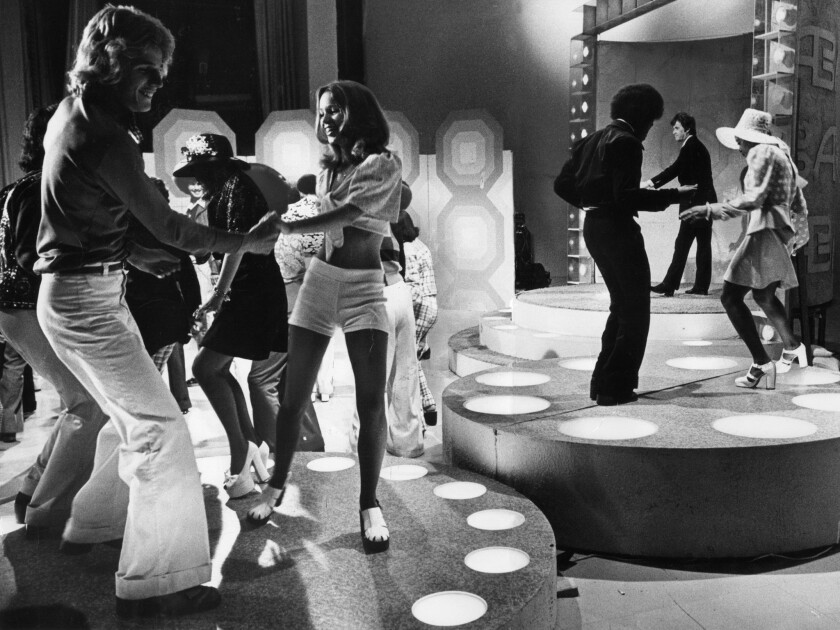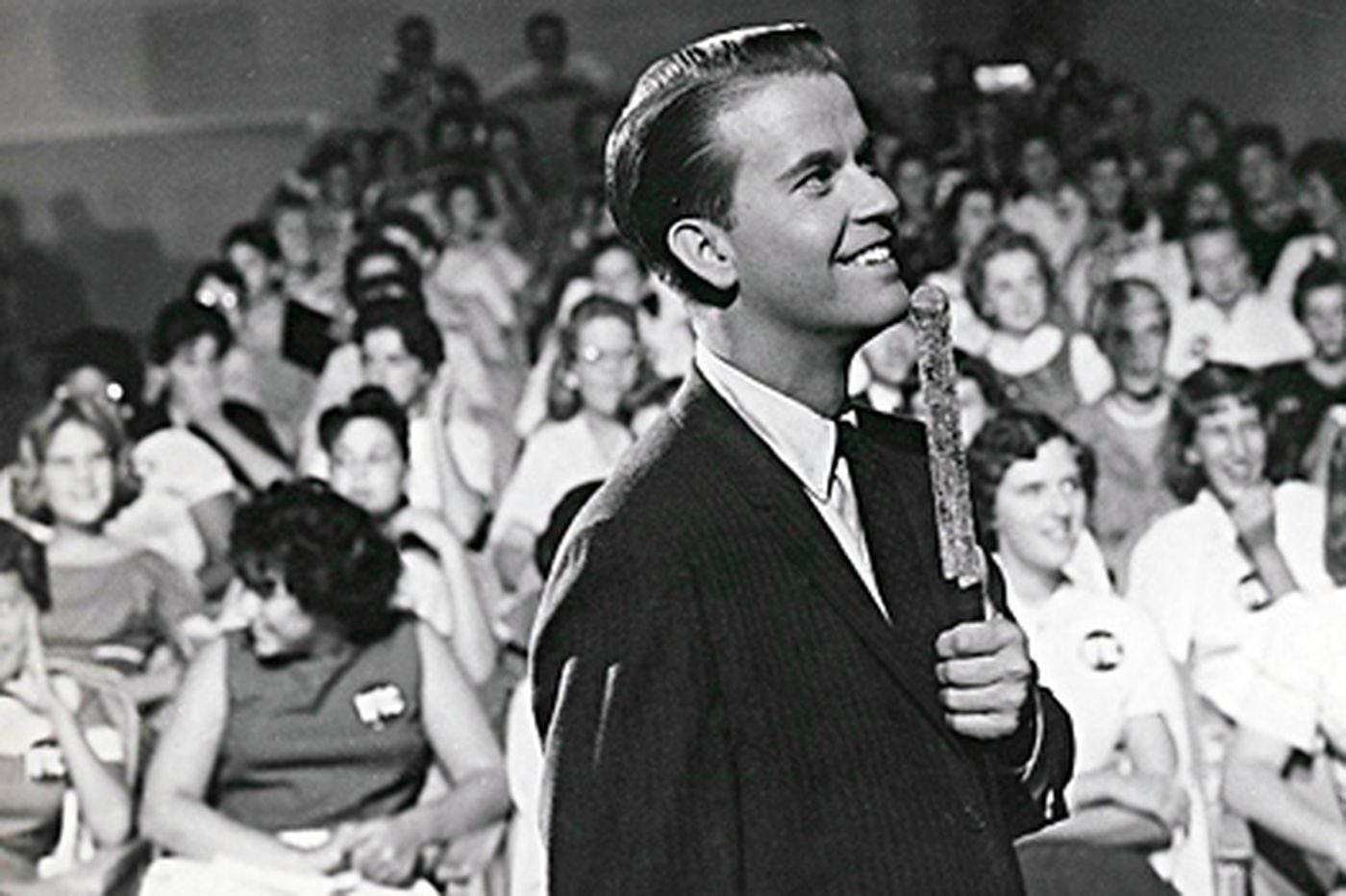As we all know, The United States had gone through a lot in the first chunk of the 20th century: The Great Depression, World War II, the Korean War, and McCarthyism. Americans were tired of this depressing, war-torn life so during the 1950s, there was a period of rebirth of consumerism, when people focused on enjoying life once again. This idea gave way to many new developments: idyllic life in the suburbs, dancing, rock n’ roll, etc. One particular example of this idea was American Bandstand, an American music and dance performance program that aired between 1952 and 1989.
It all started when a man named Dick Clark hosted his first afternoon television show called “Bandstand”. Broadcasted in Philadelphia, Clark’s show played new rock n’ roll music and featured teenagers dancing to the music. At first, the show primarily featured musical films with occasional studio guests: the dancing was almost accidental. After people expressed their like for these dancing teenagers, Bob Horn, the television host, changed the show into a dancing program, where teenagers danced on camera while records played. After Horn was replaced by Dick Clark, Clark quickly put his own spin on the show. He featured musical guests lip-synching their songs and his teenage audience rated new records.
Bandstand also played a critical role in America’s view of rock n’ roll and the music business. By featuring many different popular rock n’ roll artists’ music, the population became more receptive to that kind of music (which was previously looked down upon). Not only did it open new doorways for the music business, but adults were more accepting of letting rock n’ roll into their houses.
In regards to race, Dick Clark did allow black recording artists as guests on his show. However, under Bob Horn, bandstand’s studio audience remained highly segregated and controlled by gatekeepers, even implementing outright discriminatory policies. When Clark took over, in 1956, the show was highly segregated and even in 1957, there was evidence that admission for black teenagers to be on the show was nearly impossible. While Clark did stand up for some aspects of fair African American treatment, some believed that Bandstand missed an opportunity to further the civil rights movement, given its large sphere of influence and sway over young people’s culture.
American Bandstand played a pivotal role in America’s popular culture. Through its music and dancing, Bandstand helped form modern culture today.


Sources:
I think this topic is super interesting and I'm so glad you took the time to blog about it! As you said Americans during this period were tired of all the harships that the century had brought them and they wanted to foucus on the fun and uplifting aspects of life again. I think the fifties are a lot like the period of the Roaring twenties in American history because consumption also went up and culture also developed rapidly all over America as can be seen. The parallel between the two periods continues when we see the develpemt of Blues in the twenties and then the developement of Rock n Roll in the fifties. I think the similarities between these periods is very intresting and helps to deomonstrate the on going cyles of American culture and economics.
ReplyDeleteI think this article was very well written. Certainly, music had a very large effect on the population of the United States. Another example of the large influence of music would be Elvis. As we talked about in class, the younger generation was largely influenced by his "suggestive" rock music, and helped to further the "rock" genre. In fact, Elvis was even featured on "Bandstand" in 1964. Throughout the years, the show's host, Dick Clark, also had a close relationship with Elvis. Even during Elvis' hiatus from music, Dick Clark could be heard praising him, and when Elvis decided to come back, Clark wrote an article urging Elvis on. Overall, this article was very enjoyable to read. Well done!
ReplyDeleteSource:
http://www.elvis-history-blog.com/elvis-dick-clark.html